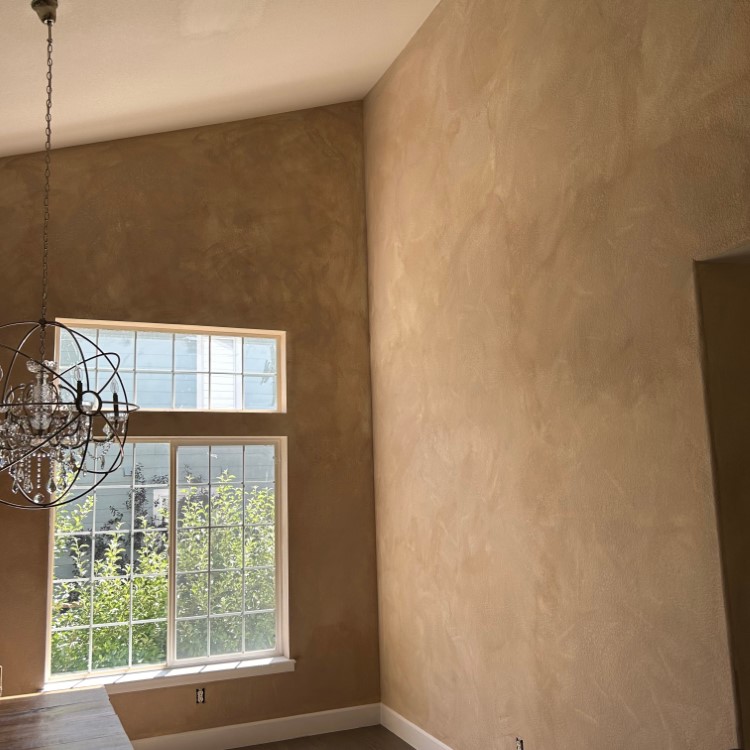Walls serve as the backdrop of our homes and businesses, setting the tone for each space. While smooth painted walls have their appeal, textured finishes bring depth, warmth, and a unique personality to any room. Whether enhancing the interior of a cozy home in Denver, CO, or refining the exterior of a commercial space, texturing is an art that transforms walls from ordinary to extraordinary.
Key Takeaway: Wall texturing adds dimension, durability, and style to interiors and exteriors, offering endless customization options for homeowners and business owners alike.
Understanding Wall Texturing
The Role of Texture in Interior Design
Texturing goes beyond aesthetics; it influences light absorption, acoustics, and even how a space feels. Denver homeowners looking to refresh their interiors often choose texturing to create visual interest while masking imperfections. Home painting services enhance textured walls, ensuring a seamless, cohesive look that lasts for years.
Different Types of Wall Textures
From subtle skin coating to bold knockdown finishes, wall textures come in various styles to suit different preferences. Some popular options include orange peel, Venetian plaster, and popcorn ceiling textures. While some styles create a smooth, elegant appeal, others introduce an artistic flair that complements rustic or modern aesthetics.
Enhancing Durability and Masking Imperfections
Texturing not only enhances beauty but also increases wall resilience. Homeowners in Denver seeking drywall repair can benefit from textured finishes that effectively conceal cracks and dents. Applying texture before painting ensures walls remain visually appealing even in high-traffic areas.
How to Choose the Right Wall Texture
Matching Texture with Home Style
Whether renovating a historic home or modernizing a contemporary space, wall textures should align with the overall design theme. Classic textures like Venetian plaster work well in traditional settings, while sleek, minimalist designs benefit from subtle textures that add depth without overwhelming the space.
Considering Lighting and Room Size
Lighting plays a crucial role in how textures appear. Soft lighting enhances the depth of textured walls, making them look richer and more dynamic. Similarly, smaller rooms benefit from light textures that reflect light, creating the illusion of a larger space.
Combining Textures with Paint and Finishes
Selecting the right paint color and finish complements wall textures beautifully. Lime wash is a popular choice for achieving an aged, organic look, while satin or semi-gloss paints bring out the highlights in textured surfaces. Interior painting services help homeowners make informed decisions, ensuring a polished final result.
The Texturing Process: Step by Step
Preparing the Surface for Texturing
Proper preparation is key to achieving flawless textured walls. Surfaces must be clean, smooth, and free of existing wallpaper or loose paint. In cases where extensive repairs are needed, drywall plastering ensures a stable foundation for applying texture.
Application Techniques for Different Textures
Various techniques, such as troweling, sponging, and spraying, produce distinct texture patterns. Skilled professionals use these methods to create everything from rustic, hand-applied finishes to machine-sprayed knockdown textures that add a contemporary touch.
Sealing and Protecting the Finished Look
Once the texture is applied, sealing it with a protective coat extends its longevity. Textured walls in high-moisture areas, such as bathrooms and kitchens, benefit from water-resistant finishes. Additionally, deck painting and staining techniques can be applied to outdoor walls for added durability.
Answering Common Questions
What is the best texture for modern interiors? Smooth textures like skin coating or subtle orange peel finishes work best in modern interiors. They add depth without overpowering minimalist designs.
Can textured walls be repainted easily? Yes, but repainting requires careful preparation. Depending on the texture type, a fresh coat of paint may need special techniques to avoid filling in the texture’s details.
Is texturing suitable for commercial spaces? Absolutely! Commercial painting services often incorporate texturing to add visual interest while ensuring walls remain durable and low-maintenance.
The Influence of Textured Walls on Home Value
Textured walls enhance a home’s marketability by adding uniqueness and character. Potential buyers appreciate well-maintained textured finishes that contribute to a space’s overall charm and sophistication.
How Texturing Interacts with Other Home Improvement Elements
Textured walls pair well with various design elements, including flooring and wallpaper installations. Combining these features allows homeowners to create a harmonious, stylish interior.
Why Professional Services Make a Difference
Achieving the perfect wall texture requires expertise, precision, and high-quality materials. Denver residents looking for professional texturing, home painting, or drywall repair benefit from experienced professionals at Dream Painting LLC.
For expert texturing and home improvement solutions, explore interior painting services and drywall plastering at Dream Painting LLC.
Texturing is a timeless technique that adds depth and personality to walls. Whether you’re updating a single room or an entire property, investing in high-quality textures ensures a stunning, long-lasting result. If you’re considering professional texturing, explore Dream Painting LLC’s wallpaper installation services or lime wash techniques for a truly custom finish. Contact us today to bring your walls to life!

